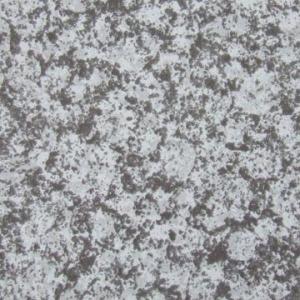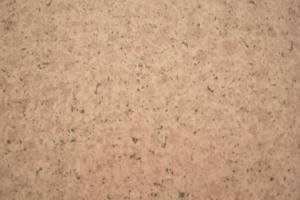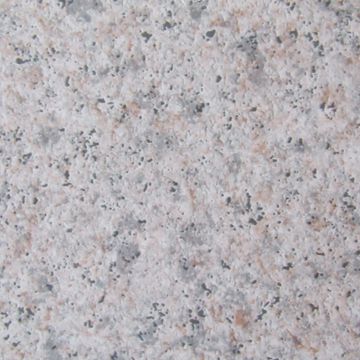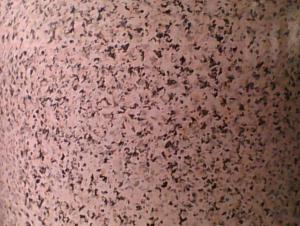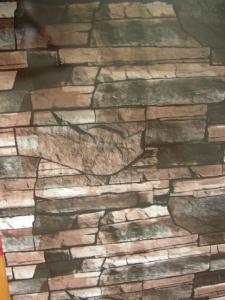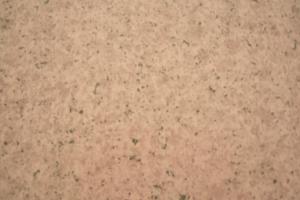Pre-painted Galvanized Steel Coil-JIS G 3312-stone pattern6
- Loading Port:
- Shanghai
- Payment Terms:
- TT OR LC
- Min Order Qty:
- -
- Supply Capability:
- 4000吨 m.t./month
OKorder Service Pledge
OKorder Financial Service
You Might Also Like
Pre-painted Galvanized Steel Coils/ PPGI/GI
I Specifications:
1.Thickness:0.16-2.0mm
2.Width:600-1500mm
3.Material: SGCC,SGCD,SECC,SECD,DX51D+Z
4.Zinc coating:40-275G/M2
5.Surface Structure: galvanized ,zero spangle, regular spangle or normal spangle
6.Surface treatment: chromated and oiled, chromated and non-oiled
7.Color:all RAL series
II Main characteristics :
1.strong corrosion resistance
2.surface quality
3.conducive to deep processing,such as the embossed PPGI,printed PPGI&punching PPGI
4.economy and practicality
III Applications:
Household Appliance:
1.Refrigerator shutter &side panels, Washer, Freezers, Air conditions,
2.Rice Cooker, Microwave Ovens, Water Heaters, Sterilization Cabinets, Range Hoods
3.Computer Panels , DVD/DVB panels, TV back panel etc.
Teaching Board: whiteboard, blackboard, green board(chalk board).
Indoor Decoration: Fireproof Door, kitchen cabinet, wall decoration.
Shipping Industries: Ship, Fecht, Marine.
Elevator/Medical Equipment/Rubbish Bin.
Thickness:0.17mm-0.8mm
Width:600mm-1250mm
Prepainted Galvanized Steel Coil
- Q: What are the benefits of using coated steel coils in roofing applications?
- There are several benefits of using coated steel coils in roofing applications. Firstly, coated steel coils are highly durable and provide excellent resistance against corrosion. The coatings applied to the steel coils act as a barrier, protecting the underlying metal from exposure to moisture, chemicals, and harsh weather conditions. This ensures that the roofing system remains intact and functional for an extended period, reducing the need for frequent repairs or replacements. Secondly, coated steel coils offer superior strength and structural integrity. Steel is known for its high tensile strength, and when combined with the protective coating, it becomes even more resilient. This makes coated steel coils an ideal choice for roofing applications, as they can withstand heavy loads, extreme temperatures, and strong winds without compromising the integrity of the structure. Additionally, coated steel coils are lightweight, which makes them easier to handle and install. This not only saves time and effort during the roofing process but also reduces the overall weight of the structure, minimizing the stress on the building's foundation. Furthermore, coated steel coils are available in a variety of colors and finishes, allowing for greater design flexibility. Architects and homeowners can choose from a wide range of options to complement the overall aesthetics of the building. The coatings also provide enhanced UV resistance, preventing color fading and ensuring that the roofing system maintains its appearance over time. Lastly, using coated steel coils in roofing applications is an environmentally friendly choice. Steel is a highly recyclable material, and the coatings used on the coils can be formulated to be environmentally friendly as well. This helps reduce the carbon footprint associated with construction and promotes sustainability. In conclusion, the benefits of using coated steel coils in roofing applications include durability, strength, lightweight, design flexibility, and environmental sustainability. These advantages make coated steel coils a reliable and cost-effective choice for any roofing project.
- Q: What are the different types of surface defects in steel coils?
- There are several different types of surface defects that can occur in steel coils. Some common examples include scratches, pits, scale, rust, and roll marks. Additionally, there can be issues such as waviness, edge cracks, and oil stains. These defects can affect the quality and appearance of the steel, and it is important to properly identify and address them during production and inspection processes.
- Q: Can steel coils be coated with self-cleaning materials?
- Yes, steel coils can be coated with self-cleaning materials.
- Q: What are the common defects in steel coils?
- Some common defects in steel coils include surface defects like scratches, rust, and pits, as well as internal defects like cracks, laminations, and non-uniform thickness. Other defects may include coil set, which is a curvature in the coil, and edge wave, which is a distortion along the edges of the coil.
- Q: What would be a better knife one with damascus steel or one without? Why is damascus steel so special other than the look? And why do some people say high carbon steel is better than regular? mainly though I want to know about the damascus. Thanks, max points to best answer.
- Damascus steel was a great steel in it's time. Because it was one of the few ways to make good steel from iron. But today there are much better steels available. Damascus steel was a very labor intensive process, a single knife would cost many thousands of dollars today. The Damascus steel knives are not actually Damascus steel, the pattern is etched on or engraved on. In fact the Damascus steel knives I saw reviewed on Consumer Reports are ceramic blades, not even steel at all. Bottom line, any Damascus steel knives are just a pattern on standard steel, no different from the others. It's a marketing gimmick.
- Q: How can the outer diameter and weight of steel coil be converted?
- To obtain the outer diameter of the steel coil is calculated according to the density of 7850, according to the density, in general, hot-rolled is 0. 96~0, 98, cold rolled, according to 0. 98~0. Ninety-nine
- Q: How are steel coils protected during shipping?
- Various measures are implemented to safeguard steel coils during shipping, guaranteeing their safety and preventing any harm. One widely used technique is the utilization of steel coil cradles or saddles. These structures, specifically designed for this purpose, securely hold the coils in place and prevent any movement or rolling during transit. Typically made from robust steel or durable materials, the cradles are engineered to withstand the weight and pressure of the coils. Additionally, steel coils are often wrapped in protective materials like plastic or paper. This wrapping acts as a barrier, shielding the coils from potential contaminants such as moisture, dust, and other detrimental factors that could compromise their quality. The wrapping is applied tightly to ensure it remains in position throughout the entire shipping process. To provide further protection, specialized equipment is used to load the coils into shipping containers or onto flatbed trucks. Coil hooks or lifting clamps are examples of such equipment, allowing for safe and secure handling, thereby minimizing the risk of accidents or damage during the loading and unloading stages. In certain cases, steel coils may be packed into wooden or metal crates to offer additional safeguarding. These crates serve as an extra layer of security and prevent any potential impacts or rough handling from causing damage to the coils. Ensuring the protection of steel coils during shipping is of utmost importance to ensure their arrival at the intended destination in optimal condition. By employing cradles, protective wrapping, specialized equipment, and additional packaging when necessary, the risk of damage is significantly reduced, resulting in a smooth and successful transportation process.
- Q: ive made lots of knives but they are dark and not shiny. how do i polish a knife and make it shiny
- If the steel knife is dark and not mirror-shiny, then it is probably carbon steel and not stainless steel. If they are carbon steel, then you cannot polish it to a mirror finish - sorry. If there's any rust on them, you can use a very-fine grit sandpaper to remove. Do not put carbon steel knives in the dishwasher, and dry them thoroughly after hand-washing. For long-term storage (meaning you don't plan to use the knife within the next few weeks), wipe the blade a bit with some mineral oil, then store the blade portion of the knife in a plastic bag.
- Q: I just bought a dpms ar15 and it says if I shoot steel cases (laquer coated) or foreign ammo it voids the warranty. But before I knew this I bought 200 rounds of Russian steel cased anmo. Think I should just shoot there two hundred and not buy anymore? Some people say all they shoot is steel cased ammo and have no problemAny advice is appreciated
- I am not aware of any catastrophic failures being attributed to Russian Steel cased ammo use. I would recommend checking out the several AR15 message boards and see what everyone who uses it has to say and if anyone has had serious problems. I have personally used Wolf steel case in all of my ARs with no serious issues. I have also fired it in several full auto rifles. What I noticed is that it is dirtier ammo than Winchester or Federal ammunition and I will get an occasional failure to eject. Right now, American production brass cased .223 is $.50-$1.00 or more per round when you can find it.. The Russian Wolf can be found for $.40 or less. Most people shoot whatever they can find and afford and do not worry about the warranty.
- Q: What are the different types of steel coil surface treatment methods?
- There are several different types of steel coil surface treatment methods that are commonly used in various industries. These methods are employed to enhance the appearance, durability, and performance of steel coils. Some of the common types of steel coil surface treatment methods include: 1. Hot-dip galvanizing: This process involves immersing the steel coil in a bath of molten zinc. The zinc coating provides excellent corrosion resistance and protects the steel from rusting. 2. Electro-galvanizing: In this method, a thin layer of zinc is electroplated onto the surface of the steel coil. It offers similar corrosion protection as hot-dip galvanizing but with a thinner coating. 3. Cold-rolled steel coil: This process involves passing the steel coil through a series of rollers at room temperature. It results in a smooth and polished surface finish, which is ideal for applications that require a high-quality appearance. 4. Pre-painted steel coil: Also known as color-coated steel coil, this treatment method involves applying a layer of paint or coating onto the steel surface. It provides an attractive appearance and additional protection against corrosion. 5. Phosphating: This treatment method involves applying a phosphate coating onto the steel surface. Phosphating improves the adhesion of subsequent coatings, such as paint or powder coating, and provides corrosion resistance. 6. Chromate conversion coating: This method involves applying a conversion coating, typically using chromium compounds, onto the steel coil surface. It enhances the paint adhesion and provides corrosion resistance. 7. Passivation: Passivation is a chemical treatment that is used to remove iron oxide and other contaminants from the steel surface. It improves the corrosion resistance of the steel coil. 8. Oiling: Oiling is a common surface treatment method that involves applying a thin layer of oil onto the steel coil surface. It helps to prevent corrosion during storage and transportation. These are some of the commonly used steel coil surface treatment methods. The choice of treatment method depends on the specific requirements of the application, such as corrosion resistance, appearance, and performance.
Send your message to us
Pre-painted Galvanized Steel Coil-JIS G 3312-stone pattern6
- Loading Port:
- Shanghai
- Payment Terms:
- TT OR LC
- Min Order Qty:
- -
- Supply Capability:
- 4000吨 m.t./month
OKorder Service Pledge
OKorder Financial Service
Similar products
Hot products
Hot Searches
Related keywords
